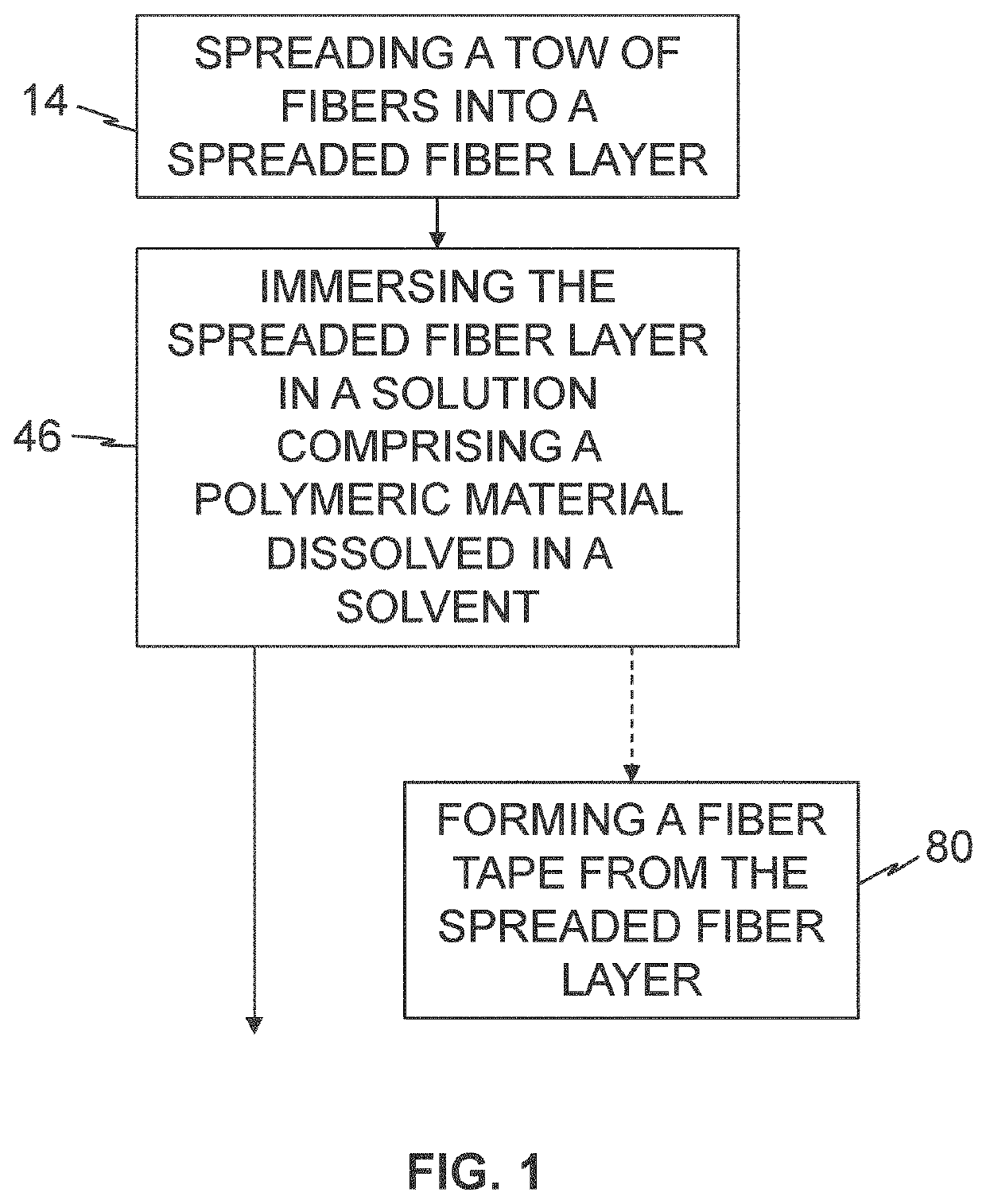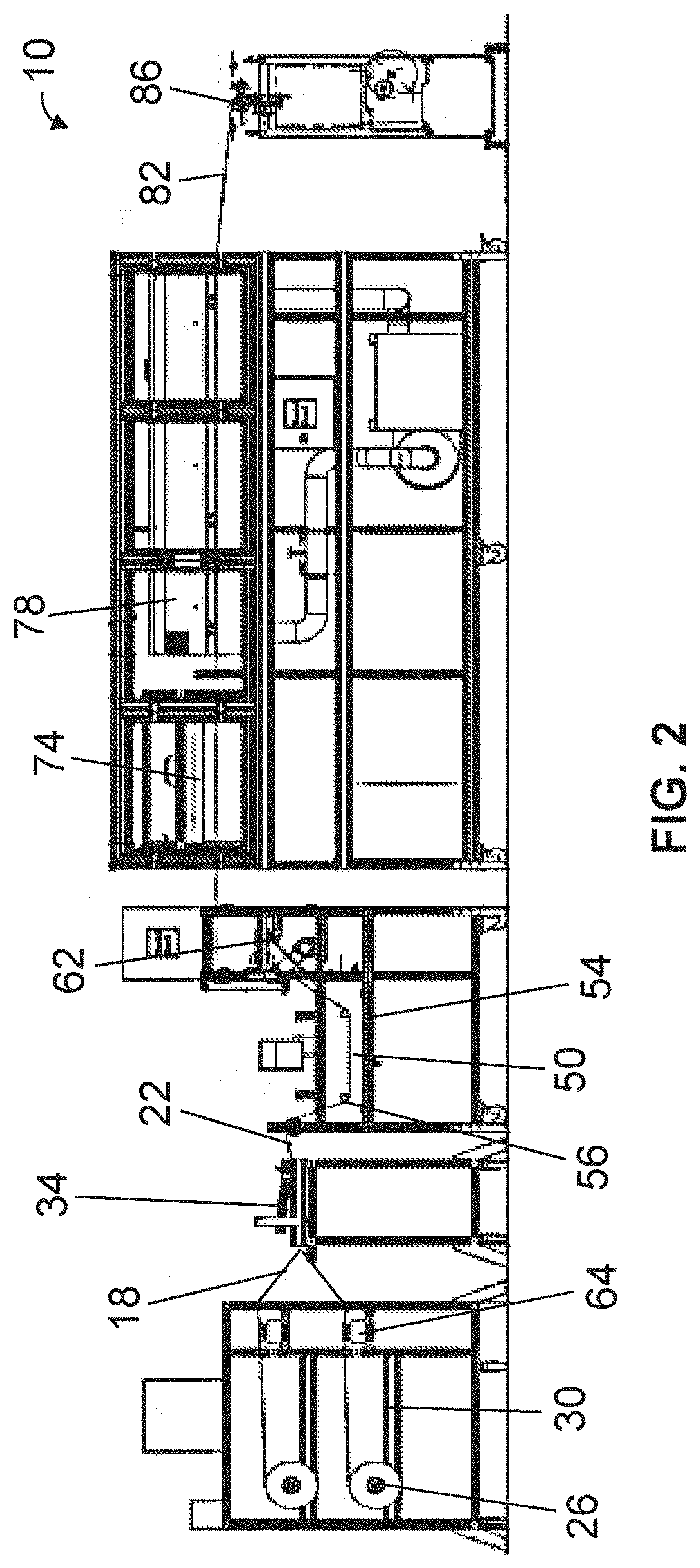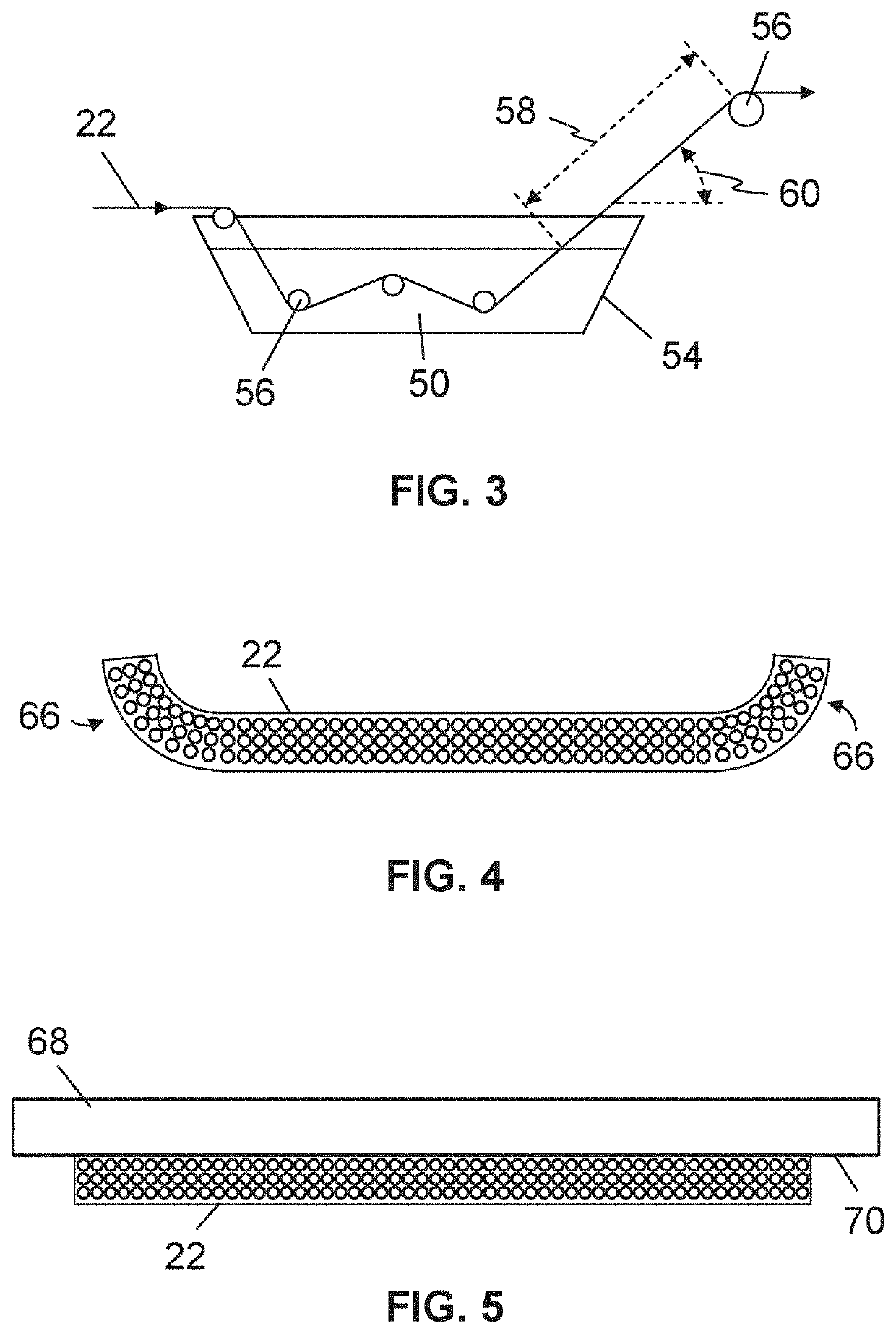Method for producing fiber tape
a fiber tape and fiber technology, applied in the direction of coatings, etc., can solve the problems of increasing the cost of the laminate, low relative and/or unpredictable fiber volume fraction, and fiber tapes with undesirable and/or unpredictable structural characteristics, etc., to achieve high fiber volume fraction, reduce the effect of deformation
- Summary
- Abstract
- Description
- Claims
- Application Information
AI Technical Summary
Benefits of technology
Problems solved by technology
Method used
Image
Examples
example 1
[0066]Fiber Tapes Produced using Solutions having Different Concentrations of Polymeric Material
[0067]Three sample fiber tapes (samples 1-3) were produced as follows. First, a solution was prepared (having a volume of at least 1 liter) by dissolving polycarbonate (Lexan® HF1110, SABIC Innovative Plastics) pellets in dichloromethane, which was facilitated by a shaker, and the solution was poured into a bath. A tow of carbon fibers (12K size; Formosa TC-35; unsized fibers) was spread into a spreaded fiber layer and subsequently passed through the bath. From the bath, the spreaded fiber layer was directed through a nip roller to remove excess solution. Finally, an infrared heater and a hot air oven were used to evaporate dichloromethane from the spreaded fiber layer.
[0068]For sample 1, the solution had 5% polycarbonate by weight, for sample 2, the solution had 7% polycarbonate by weight, and, for sample 3, the solution had 10% polycarbonate by weight. For each of the three samples, lin...
example 2
Fiber Tapes Produced Using Different Line Speeds
A. Using a Solution Having 5% Polycarbonate by Weight
[0070]The process described in Example 1 was performed using a solution having 5% polycarbonate by weight at line speeds of 0.25, 0.50, 1.00, and 2.00 m / min. FIG. 8 is graph of fiber volume fraction vs. line speed for the resulting fiber tapes, including fiber tape thicknesses in mm. As shown, fiber volume fraction was found to increase with increasing line speed, which may be due to less polycarbonate depositing onto the fibers as residence time of the fibers in the bath decreases.
B. Using Solutions Having 15% and 20% Polycarbonate by Weight
[0071]The process described in Example 1 was performed using solutions having 15% and 20% polycarbonate by weight at line speeds of 1, 3, and 4 m / min. FIG. 9 is a graph of fiber volume fraction vs. line speed for the resulting fiber tapes, including fiber tape thicknesses in mm. As shown, fiber volume fraction was found to decrease with increasin...
example 3
Fiber Tapes Having Flame Retardant Properties
[0073]In the following example, fiber tapes were produced using the process described in Example 1, and laminates were produced using those fiber tapes. For the fiber tapes and in this example, no flame retardant was included in the solution or otherwise applied to the fibers.
A. Carbon Fiber Tapes
[0074]Carbon fiber tapes were produced having thicknesses ranging from approximately 0.08 mm to 0.20 mm, and these tapes were tested for flammability pursuant to the UL-94 standard. The results are depicted in FIG. 11, which shows burn length vs. fiber volume fraction for the tapes, including tape flame out times (t1+t2) in seconds (s). For a given tape, the burn length is the length of the tape that caught fire during testing. As shown, for the produced tapes, both burn length and flame out time were inversely related to fiber volume fraction. Notably, each of the produced tapes had a flame out time that was sufficient for the tape to receive a ...
PUM
| Property | Measurement | Unit |
|---|---|---|
| thickness | aaaaa | aaaaa |
| thickness | aaaaa | aaaaa |
| distance | aaaaa | aaaaa |
Abstract
Description
Claims
Application Information
 Login to View More
Login to View More - R&D
- Intellectual Property
- Life Sciences
- Materials
- Tech Scout
- Unparalleled Data Quality
- Higher Quality Content
- 60% Fewer Hallucinations
Browse by: Latest US Patents, China's latest patents, Technical Efficacy Thesaurus, Application Domain, Technology Topic, Popular Technical Reports.
© 2025 PatSnap. All rights reserved.Legal|Privacy policy|Modern Slavery Act Transparency Statement|Sitemap|About US| Contact US: help@patsnap.com



